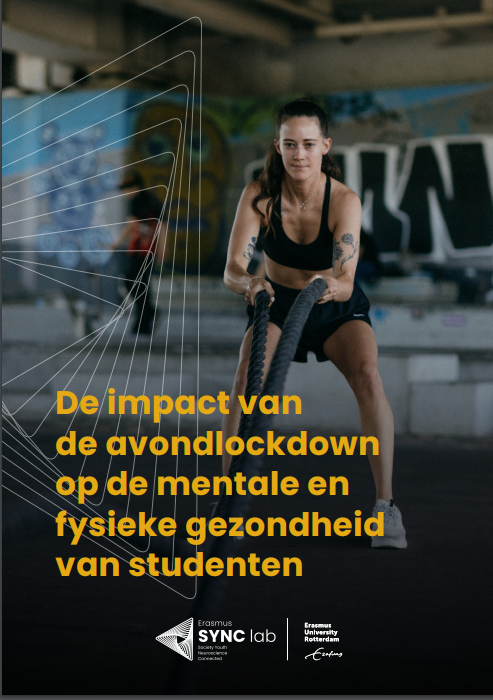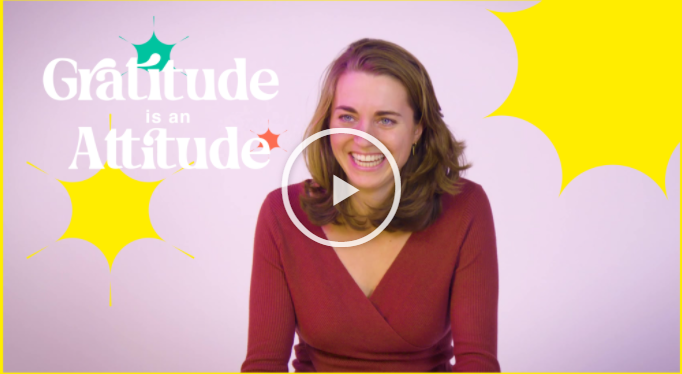Being the bridge: Connecting science and society

After graduation from an interdisciplinary master’s degree in Brain and Cognitive Sciences I was certain about one thing: I want to connect science to society and act as the bridge between them. During my time as research intern or research assistant I often grew frustrated over the lack of public recognition for our work. There were all these amazing scientific outcomes that could benefit society, so why do so little people outside academia know about them? This is when the Erasmus SYNC lab came into view. SYNC stands for Society, Youth and Neuroscience Connected. Well, you can imagine that this name appealed to me immediately.
As of August, I am a Junior Researcher at the YoungXperts core team within the SYNC lab. Together, we develop novel ways to connect with youth and societal partners. My tasks consist of hosting youth panels, networking as well as fostering collaborations with societal partners and science communication. Hence, I now had a chance to practice ‘being the bridge.’ While I am still growing into my role, I would like to share the five core insights that I had in this position so far:
- Shifting message styles
Whatsapp voice messages with youth workers, vlogs for adolescents who hate long documents, texting with teachers, emails with policy makers, Slack with my fellow colleagues. This is just a handful of communication tools that I use to foster citizen science initiatives. Whereas in research we naturally tend to write detailed pieces of information, I quickly realized I would need to learn to shift my styles according to the audience. Because, the key to successful communication with our societal partners is to dive into their world. One moment that this became particularly evident for me was during the Healthy Start Kick-off conference (amazing initiative, check it out here). During this conference, I brainstormed with young scientists and youth workers about solutions for durable knowledge transfer between science and practice. At one point one youth worker exclaimed; ‘You scientists talk in such an abstract way!’ And she was right: without being consciously aware, we talked in terms of systems and concepts. Youth workers on the other hand need to be clear and decisive so directness and practical wordings are their tools of choice. So now, whenever I meet with youth workers, youth or other practically oriented people, I try to make my message tangible. Her advice was to start on a small and practical scale and let it evolve from there. How refreshing!
Quote: “You scientists talk in such an abstract way!’ – Youth worker
- Fostering collaborations
Over the past few months, I have come across A LOT of admirable initiatives that aim to provide optimal conditions for youth. All initiatives are driven by very passionate people, so how do we choose with whom we want to collaborate? Compared to research collaboratives, where each party’s interest is relatively similar – share knowledge, share data, obtain money for research – the interests of societal partners can vary significantly and are oftentimes influenced by political motives. I have explored options for collaboration based on effect measurements, sharing knowledge, financial constructions, empowering adolescents, and more. This leads to questions such as ‘how do we remain scientifically independent? How do we go about money? How much time are we willing to invest?’ I have found a few factors that catalyze win-win collaborations.
- Collaborations that grow based on passion and time-investment, rather than financial dependency.
- Collaborations where task division is very obvious (for example, we provide scientific knowledge, and you provide design)
- Spontaneous collaborations based on societal momentum.
To give an example of the latter, last December we were approached by the board of ACLO Student sports Groningen and student initiative ‘Lieve Mark.’ It was a couple days before the press conference would inform Dutch citizens about the evening lockdown, which meant closing sports facilities. The ACLO sports club saw the physical and mental health of its students dwindle and wanted to let their voices be heard. So, could we collaborate? To gain momentum, we wanted to launch the questionnaire right after the press conference. Within a couple days, we co-created a questionnaire, obtained 800 responses in two days using the snowballing method, wrote a report and infographic and met with OMT-member Károly Illy to present our findings. Short track run, but great collaboration and huge impact!

- Balancing scientific nuance and societal clearness
“Students who report feeling bored during the lockdown use more alcohol and drugs”. This is not true. Actually, it should be: “From the students who report feeling bored during the lockdown, 30% reports to use more alcohol than usual and 20% reports to use more drugs than usual.” As part of my job, I translate scientific outcomes into short facts that are posted on our YoungXperts Instagram and website. The first sentence fits on an Instagram post, the second sentence does not. The scope of the two sentences is entirely different. Still, this is a relatively easy scientific fact. How should we communicate scientific outcomes regarding brain activity which reflect a chance and a non-causal relationship? Or should we mostly focus on our behavioral outcomes? I now realize that navigating this fine line between scientific nuance and societal clearness is like a puzzle. With creating impact and interest as the goals, we cannot resort to lengthy paragraphs to ensure perfect academic work. Hence, at SYNC we invest a good chunk of time discussing best practice approaches and are keen to grow in science communication. One initiative for which this worked out pretty great is ‘We Spark The World.’ Don’t hesitate to check out the science communication video starring me while explaining the neuroscience of gratitude!

- Bridging as the in-between
It is inherent to being a bridge that one doesn’t really belong to either side. Funnily enough, I never really thought of this before I experienced bridging science and society. At the moment I’m neither an academic researcher and nor fully embedded in a societal organization. My tasks simply lie in between. In this, I believe that my role is crucial and will become increasingly important in the future. The tasks involved in connecting science to society, such as organizing and hosting youth panels, visiting societal partners, going to networking events, making sure everyone is on the same page, are time-consuming. If academia wants to build stronger connections with society, like the SYNC lab does, the time spent on societal activities means less time spent on research. For PhD’ers and post-docs with a publication pressure this means a lot of work, maybe even too much work. Luckily, academia is beginning to see why societal impact is so important and wants to embed this within the new ‘Erkennen en Waarderen’, but change won’t come overnight. Instead, I think and hope it will become more common in the future to hire people in academic settings that solely focus on connection with society. My function in the SYNC lab is just the start of it and since it’s so new I’ve noticed we are still figuring out what should be my responsibilities. It’s like my colleague recently said about the rise of big data: “Ten years ago data manager wasn’t a function because all researchers managed themselves. Now, they are everywhere!” And don’t we all need them?
- Once a believer, always a believer
Within the YoungXperts team we believe exactly what the name implies, namely that young people are the experts when it comes to their experiences within society. Therefore, whenever we want to solve a societal problem that involves adolescents, adolescents should be part of the process. During my time at the SYNC lab, I have joined many ambitious meetings that aim to benefit and help youngsters. One thing I learned is that we inevitably, even with the best of intentions, make assumptions about adolescent’s opinions or situations. There is one simple solution: check your assumptions and let adolescents be part of the process. From experience I can say: once you’ve grasped the importance of youth participation (this doesn’t take long), you can’t go back to the way things were before. Even research shows that interventions for youth are most effective when youth was part of creating the program. Therefore, I subscribe myself to the motto: ‘Nothing about us, without us.’
To those who have more experience in bridging science and society: I would love to learn more about your experiences and am excited to hear whether you resonate with what I have noticed so far. Feel free to get in touch!
Contact
Erasmus University Rotterdam
Mandeville Building T13
Burgemeester Oudlaan 50
3062 PA Rotterdam, the Netherlands

